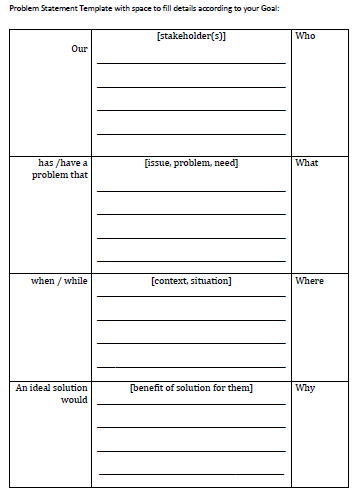1. Problem Scoping
Problem Scoping means selecting a problem which we might want to solve using our AI knowledge.
Problem Scoping is the process of identifing the scope the problem (like cause, nature or solution of a problem) that you wish to solve with the help of your project.
The process of finalising the aim of a system or project means you scope the problem that you wish to solve with the help of your project. This is "Problem Scoping".
4Ws Problem Canvas
The 4Ws Problem canvas helps you in identifying the key elements related to the problem. Let us go through each of the blocks one by one.

Who? [Who is having the Problem?]
The “Who” block helps you in analysing the people getting affected directly or indirectly due to it. It helps to find about the ‘Stakeholders’ of a problem. Stakeholders are the people who face the problem and would be benefitted with the solution.
What? [What is the nature of the Problem?]
The “What” block helps to determine the nature of the problem i.e. What is the problem and how do you know that it is a problem? Under this block, you also gather evidence to prove that the problem you have selected actually exists. Newspaper articles, Media, announcements, etc are some examples.
Where? [Where does the problem arise?]
The "Where" block focuses on the context / situation / location of the problem. It help to look into the situation in which the problem arises,and the locations where it is prominent.
Why? [Why it is worth solving?]
After listed down all the major elements that affect the problem directly, it is convenient to understand who the people that would be benefitted by the solution; what is to be solved; and where will the solution be deployed.Thus in the “Why” block, think about the benefits which the stakeholders would get from the solution and how would it benefit them as well as the society.
Problem Statement Template
After finding the 4Ws Problem canvas, we need to summarise all the details into one template. Therefore, the Problem Statement Template helps us to summarise all the key points into one single Template so that in future, whenever there is need to look back at the basis of the problem, we can take a look at the Problem Statement Template and understand the key elements of it.
